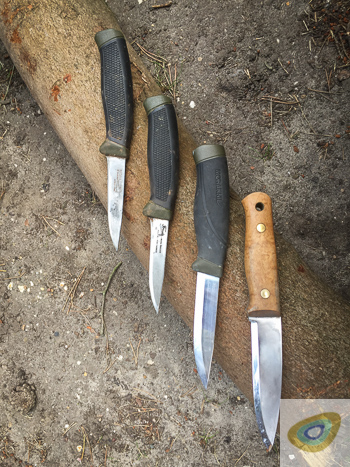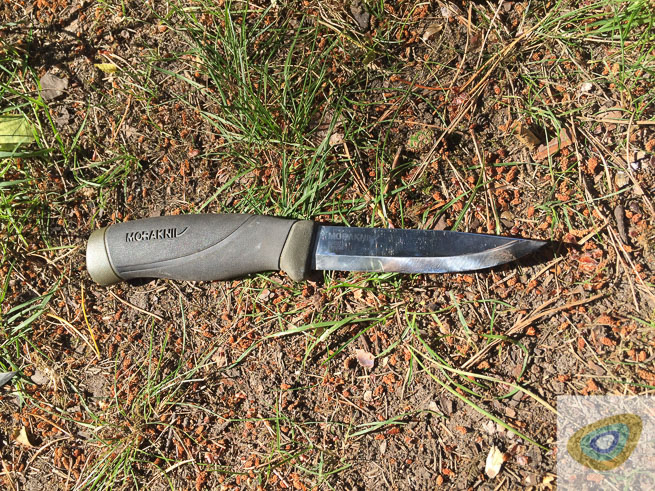
I have a knife. There is nothing exceptional about the design or materials used in this knife. Nor is there anything exceptional about the manufacturing process. It is what people commonly refer to as a standard bushcraft knife. It is well used, and has been on many notable trips with me.
True, this knife’s maker is Alan Wood. But is is just a knife. I have had it many years. It is getting a little worn down in the blade now, and I am getting near to replacing it.
It is the knife I take on me for all my overseas trips. I use it little in the UK. There is no need. The consequences of a broken knife in the UK does not often warrant taking it out. I take this knife on trips when the consequences of a broken knife and the associated risks are unacceptable. It not about being “precious” about the knife – far from it. It is just good expedition planning.
It took me a while to get round to buying this knife. I spent many years as a child with a standard Swiss Army Knife. I then graduated to a “survival knife” – you know, the one with the hollow handle in which you could keep your wire saw, fishing kit, and matches, and a compass in the top. Absolutely useless for most realistic survival situations, but ideal for a 13 year old!
When I first started purposefully learning about bushcraft. I was given a Mora knife to use. It was sharp, had a reasonably safe handle and sheath. It did not have a very thick blade – but it was a knife. Of all the advice given to me on knife use, the advice I got that day has stuck with me. It is advice I pass on to others who were in my position.
- Use this knife;
- Don’t spend money on getting an expensive one until you know how to sharpen;
- Only then spend a decent sum of money on one when you know you are going to be in a position where you cannot rely on your equipment failing you.
So I did that. My first Mora went the way of the bin not soon after, and I replaced it. I carved, split, chopped and cooked with it. I sharpened and cleaned it. This one I still have with me today.
Eventually the blade wore down so much I got another.

And the same happened again, but this time not so quickly. My understanding of how to keep knife sharp in the field had progressed. After some time, I got another.

And eventually another…

These early knives now resemble a stiletto knife much more than a bushcraft knife. But they are still knives and I still use them. They are very useful in butchering larger game, or filleting fish for instance.
It is often said that “your knife is your life”. If faced with an unexpected emergency situation in remote forested country, and given a choice between an axe and a knife, I would take the axe every time – it offers far greater utility value for protecting myself against the environment (firewood and shelter specifically) in many kinds of situation than a small bladed knife.
One thing is for sure though, if I only had a knife in an emergency situation, as long as it was not going to break under the use case, no amount of fancy rivets, inlay, colourful scales would make the blindest bit of difference.
It’s a knife.
Latest posts by Iain Gair (see all)
- It’s Just A Knife: Use It - August 8, 2017
- Elk Scran: A Pop-Up Feast In Paradise - February 28, 2017

Luke
Good advice. I’m on my second Mora, and although I’d love to own a sexier ‘bushcraft’ knife, there’s just no need. If I’ve struggled (or failed) to accomplish a task, the limiting factor has thus far always been my skills, not my knife.
Robert Caputo
When it comes to splitting a pelvis, you won’t find a better knife. The butt and hilt of this knife are perfect for that task. These knives are heavy-duty and the high carbon steel holds an edge well. Arguably, the best fixed blade hunting knife you can buy today. thanks
Ernest Jenkins
But fixed blade knives break very rarely and they are easy to maintain. The blade and the handle are connected to the specific way so that they last longer than folding knives.